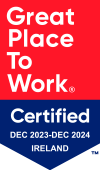In a year when our medical services have come under more scrutiny than ever, we take a look at ISO 13485, the Medical Devices Management System Standard, and see how and where it might benefit providers, the medical profession and hospital services.
ISO 13485 Medical Devices Management System specifies requirements for a comprehensive Quality Management System (QMS) for the design and manufacture of medical devices.
While its primary objective is to facilitate harmonised medical device regulatory requirements for QMS, it also aims to improve customer satisfaction levels by driving awareness of customer requirements.
ISO 13485 includes a mix of particular requirements for medical devices together with those requirements of ISO 9001 such as Risk Mitigation and Customer Focus which are appropriate. Areas where the two ISO standards crossover are,
Risk Mitigation: Both standards emphasise the need for organisations to incorporate risk into design and production
Plan-Do-Check-Act: While the standards don’t share the same structure, they both follow the PDCA process approach
Customer Focus: Both ISO 13485 and ISO 9001 focus on ensuring customer expectations are met
QMS Requirements: Full compliance mandates organisation’s employ effective processes and tools for Document Control, Employee Training, Audits and Corrective Action
It is important to point out here that because ISO 13485 excludes several key requirements of ISO 9001, organisations whose QMS conforms to the Medical Devices management standard cannot also claim conformity to the Quality Management standard.
To clarify, here-below are the areas in which the two standards differ:
Continuous Improvement: ISO 13485 requires organisations to demonstrate effective implementation and maintenance of the management systems whereas ISO 9001 mandates they show continuous improvement
Documentation: The documentation requirements of ISO 13485 are more extensive than its predecessor
Regulatory Compliance: ISO 13485 is closely aligned to regulatory requirements
Risk Management: Businesses implementing a MDMS will have to demonstrate how they incorporate risk management principles into product fulfilment and the outcomes of market feedback surveys
In addition, as one would expect, ISO 13485 is primarily concerned with the safety and effectiveness of medical devices while the quality management standard is all about customer satisfaction.
Why ISO 13485?
At at time when more and more of our population is becoming reliant on professional medical services, it is paramount that our medical institutions – hospitals, clinics, hospices, surgeries – are equipped with best-in-class medical devices. Already under enormous pressure, our hospitals and in particular, hospital medical staff including paramedics, do not need any hindrances in the form of sub-standard equipment when carrying out their jobs, which let’s be honest cross the full medical spectrum from looking after the smallest of cuts and bruises to carrying out life-saving procedures.
ISO 13485 applies to companies in one or more stages of medical device production including materials supplies, design, manufacture, sterlisation and distribution. In other words, the standard covers all stages of the medical device lifecycle.
While it’s widely known that deploying a QMS results in faster supply chain management, similarly MDMS quality excellence initiatives can result in waste reduction, increased efficiencies and improved first pass yield. Further, the resultant improvement in customer satisfaction levels will in turn yield higher profits.
Faster cycle times aside, ISO 13485 can also help companies reduce waste across all stages of the production process. Identification and removal of over-production, defects and scrap are just some of the benefits medical device management system deployment can bring to an organisation. The resultant reduction in labour and materials costs brought about by the decrease in customer returns thanks to production quality excellence will themselves positively impact on the bottom line.
By introducing a common language to describe inefficiencies and process improvements, an ISO 13485 MDMS will bring about enhanced operational efficiencies. A medical device management system can help open clear inter-organisational communications whilst also providing systemic methods for improving processes through tried and tested quality management techniques.
At the end of the day however, the litmus test for any product, process or service is customer satisfaction. In the field of medicine, that benchmark translates into effective hospital services and successful patient outcomes. Given that medical devices can have such an impact on people’s lives and quality of life, there is little room for error, human or otherwise.
It is imperative that all medical devices, large and small, can consistently withstand environmental strains, be used for the purposed intended, and conform to design thresholds. Patients and their families need to be able to put complete trust in their medical team, something which can only come about if those medical professionals have access to best-of-breed devices that match their own expert credentials. If those devices being used in hospitals, doctor’s and dental surgeries, hospices and nursing homes alike, have gone through a supply chain underpinned by ISO 13485 then all ‘interested parties’ – hospital management, medical teams, patients and families – can be sure that only the best equipment, from stethoscopes to MRI machines, are both at their disposal, and being used to support and enhance treatment.
By employing ISO 13485 medical device management systems designers, manufacturers, and suppliers are not just improving their chances of achieving product and service excellence, they are helping to improve medical professionals’ chances of providing effective treatment and patients’ chances of good recovery.
What better objective can any organisation have than achieving positive patient outcomes?
Do you design, manufacture or maintain medical devices? Then ISO 13485 could be for you! Before you go, take a look at our short video.


